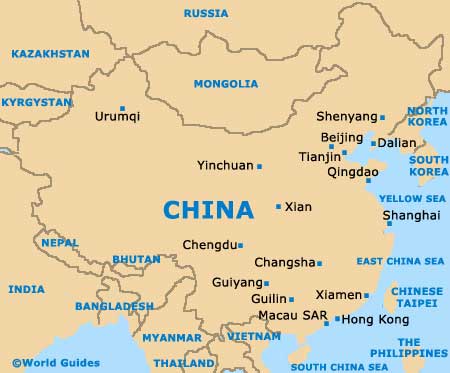 China is one of the world’s oldest civilizations and is regarded as the oldest continuous civilization. Prior to the nineteenth century, it possessed one of the most advanced societies and economies in the world; but through successive dynasties it then missed the industrial revolution and began to decline. In the 19th and 20th century, imperialism, internal weakness and civil wars damaged the country and its economy, and led to the overthrow of imperial rule.
China is one of the world’s oldest civilizations and is regarded as the oldest continuous civilization. Prior to the nineteenth century, it possessed one of the most advanced societies and economies in the world; but through successive dynasties it then missed the industrial revolution and began to decline. In the 19th and 20th century, imperialism, internal weakness and civil wars damaged the country and its economy, and led to the overthrow of imperial rule.
In 1949, after major combat ended in the Chinese Civil War, two states calling themselves “China” emerged:
 The People’s Republic of China (PRC), established in 1949, commonly known as China, has control over mainland China and the largely self-governing territories of Hong Kong (since 1997) and Macau (since 1999).
The People’s Republic of China (PRC), established in 1949, commonly known as China, has control over mainland China and the largely self-governing territories of Hong Kong (since 1997) and Macau (since 1999). The Republic of China (ROC) established in 1912 in mainland China, now commonly known asTaiwan, has control over the islands of Taiwan, Penghu, Kinmen, and Matsu.
The Republic of China (ROC) established in 1912 in mainland China, now commonly known asTaiwan, has control over the islands of Taiwan, Penghu, Kinmen, and Matsu.
In the 1950s, change to economic policies in Taiwan transformed the island into a technology-oriented industrialized developed economy after a period of high growth rates and rapid industrialization. In mainland China, in the 1970s, reforms known as the Four Modernizations modernized the agriculture, industry, technology and defense, vastly raising living standards, and making the PRC one of the great powers.
Historically, China’s cultural sphere has extended across East Asia as a whole, with Chinese religion, customs, and writing systems being adopted to varying degrees by neighbors such as Japan, Korea and Vietnam. Through its history, China was the source of many major inventions. It has also one of the world’s oldest written language systems. The first evidence of human presence in the region was found at the Zhoukoudian cave. It is one of the earliest known specimens of Homo erectus, now commonly known as the Peking Man, estimated to have lived from 300,000 to 780,000 years ago.
Confucianism was the official philosophy throughout most of Imperial China’s history, and mastery of Confucian texts was the primary criterion for entry into the imperial bureaucracy. China’s traditional values were derived from various versions of Confucianism. A number of more authoritarian strains of thought have also been influential, such as Legalism.
There was often conflict between the philosophies, e.g. the Song Dynasty Neo-Confucians believed Legalism departed from the original spirit of Confucianism. Examinations and a culture of merit remain greatly valued in China today. In recent years, a number of New Confucians (not to be confused with Neo-Confucianism) have advocated that democratic ideals and human rights are quite compatible with traditional Confucian “Asian values.”
With the rise of European economic and military power beginning in the mid-19th century, non-Chinese systems of social and political organization gained adherents in China. Some of these would-be reformers totally rejected China’s cultural legacy, while others sought to combine the strengths of Chinese and European cultures. In essence, the history of 20th-century China is one of experimentation with new systems of social, political, and economic organization that would allow for the reintegration of the nation in the wake of dynastic collapse.
Although China has experienced tremendous economic growth since the late 1970s. In large part as a result of economic liberalization policies, the gross domestic product (GDP) increased tenfold between 1978 and 2006, and foreign investment soared during the 1990s; in 2007 China passed Germany to become the world’s third-largest economy. China’s challenge in the early 21st cent. will be to balance its centralized political system with an increasingly decentralized economic system and increase domestic consumption to diminish its economy’s great dependence on exports for growth.
Agriculture is by far the leading occupation, involving almost 50% of the population, although extensive rough, high terrain and large arid areas-especially in the west and north-limit cultivation to only about 15% of the land surface. Since the late 1970s, China has de-collectivized agriculture, yielding tremendous gains in production. Even with these improvements, agriculture accounts for only 12% of the nation’s GDP. Despite initial gains in farmers’ incomes in the early 1980s, taxes and fees have increasingly made farming an unprofitable occupation, and because the state owns all land, farmers have at times been easily evicted when croplands are sought by developers. Additional land reforms adopted in 2008 allow farmers to transfer land use rights.
Notes from Wikipedia and Answers.com









